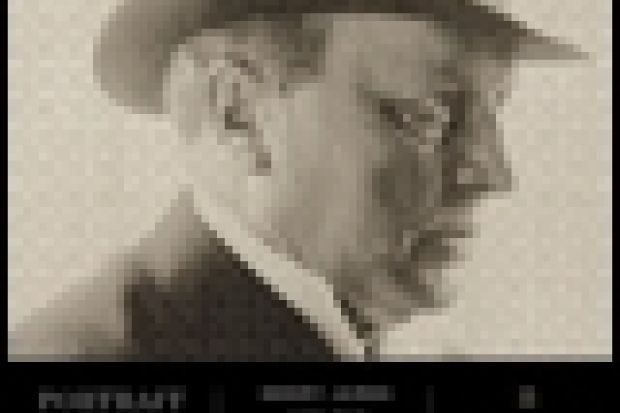If a novel survives the passage out of its own era and into the future, it has two lives. First there’s the intrinsic life of its contents: all the work the writer has done in solitude, arranging the music and meaning of the words on the page. Second there’s its afterlife in the minds of its readers. The novels we cherish at the heart of our literature are overlaid with accretions of response: with our idea of the author’s life, with layers of interpretation, with all the politics of cultural high valuation and revaluation. The novel and its myth interpenetrate one another in the awareness of its readers. Henry James’ The Portrait of a Lady, the story of a spirited American girl who chooses the wrong husband in Old Europe, has quite a history in our literary culture, and Michael Gorra’s loving homage wraps aspects of the history and the myth around readings of the work itself.
Although The Portrait is at the centre of Gorra’s book, it takes in James’ whole life: his upbringing in the wake of his father’s drifting idealism; his decision to live in Europe and his years establishing himself as part of London’s literary scene; his failed attempts in the 1890s to make a success of writing for the theatre; his dictating the late, great novels to a typewriter in the garden room of Lamb House at Rye in Sussex.
Born in 1843, James lived to see the Great War, which seemed to “undo everything…in the most horrible retroactive way”. The Portrait of a Lady in 1881 marks a mid-point pinnacle in James’ career, and Gorra says he meant it from the beginning as a “frank bid for mastery”. It was published in the US by Houghton Mifflin and in the UK by Macmillan, in one of the three-decker editions that were tailored for Charles Mudie’s all-powerful circulating library (for a guinea a year you could borrow as many first volumes as you liked, each subsequent volume costing a shilling). It appeared first, however, in (more lucrative) serial form in Macmillan’s Magazine and The Atlantic. The novel outgrew the eight instalments James had originally planned for it and started “to look as if it would run for twelve; in the end, it took fourteen”. It is fascinating to think that the public were reading those earlier chapters before James even quite knew how he would carry off his ending.
Alongside the biographical and bibliographical material, Gorra picks his way sequentially through The Portrait of a Lady itself, relishing and quoting. His thoughtful commentary makes us remember just how good the novel is: fresh and sophisticated at once, lucidly intelligent, vividly alive. Unhappily married, Isabel Archer embodies the usual impossible tension in 19th-century womanhood, between individual free choice and the submission to social law; James’ ambiguous ending seems to leave her hesitating on the brink of modernity and new possibilities of autonomy. Rereading the novel in 1906 when he revised it for the monumental New York Edition of his works, James thought that the best thing in it was the chapter where Isabel sits in long vigil by her fireside in Rome, fathoming what her marriage has been and how she has misunderstood everything. The drama is all interior, in the movements of her mind and the growth of her perceptions.
James finished writing The Portrait in Venice, in a room “with a view across the water to the pink-walled church of San Giorgio Maggiore…’the far shining lagoon…the movements of the quay, the gondolas in profile’”. He took his morning coffee at Florian in the Piazza San Marco and then worked in the afternoons; a change from the rhythm of his London life, where he worked first and went walking in the city afterwards. All these delicious details in Gorra’s book constitute a kind of pilgrimage around the novel - and he has made his pilgrimage quite literally too, following in James’ footsteps and reporting, for instance, that the prices at Florian are rather steeper than when James breakfasted there. We don’t need to know these things in order to be spellbound by The Portrait; yet the scene of the creation of any enduring work is a mystery in itself - James was fascinated by the idea of the room where Flaubert wrote Madame Bovary. The story behind the story, as this book demonstrates, may be part of its rich life in our imagination.
Portrait of a Novel: Henry James and the Making of an American Masterpiece
By Michael Gorra
W.W. Norton, 384pp, £20.00
ISBN 9780871404084
Published 7 September 2012
Register to continue
Why register?
- Registration is free and only takes a moment
- Once registered, you can read 3 articles a month
- Sign up for our newsletter
Subscribe
Or subscribe for unlimited access to:
- Unlimited access to news, views, insights & reviews
- Digital editions
- Digital access to THE’s university and college rankings analysis
Already registered or a current subscriber? Login




